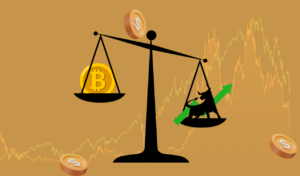Stock Trading vs. Crypto Trading: Profit Showdown
Introduction
The debate between stock trading and crypto trading often centers around profitability. Attracting investors with different risk appetites, investment goals, twin markets present unique opportunities, challenges. In this comprehensive exploration, we’ll delve into the key aspects of stock trading and crypto trading, highlighting their differences and similarities in terms of profit potential.
Stock Trading: The Traditional Landscape
Market Maturity and Stability
Stock trading takes place in well-established financial markets with decades and in some cases centuries, of history. The maturity of these markets contributes to relative stability compared to the unmovable-evolving landscape of cryptocurrencies.
Highlight: While stability is an advantage, it might limit the explosive growth potential seen in emerging markets.
Diversification Opportunities
One of the strengths of stock trading lies in the vast array of investment options available. Investors can diversify their portfolios across different sectors, industries, and geographical regions, reducing risk through a well-balanced approach.
Highlight: Diversification is a tried-and-true strategy for risk management and long-term wealth building.
Dividends and Passive Income
Many stocks pay dividends, providing investors with a consistent income stream. Dividend stocks are often favored by those looking for a more passive investment strategy. A 2020 report from the Financial Industry Regulatory Authority (FINRA) revealed that a significant 72% of day traders concluded the year with financial losses.
Highlight: The dividend part adds an extra layer of attractiveness for income-focused investors.
Regulatory Environment
Stock markets are subject to rigorous regulatory oversight, supplying a level of security for investors. Regulations are designed to ensure fair practices, transparency, and market integrity.
Highlight: The regulatory framework contributes to a sense of trust and stability in stock markets.
Crypto Trading: The New Frontier
In 2022, the global market for cryptocurrencies was valued at approximately £621 billion, according to insights from Grand View Research. Predictions suggest that by 2030, the overall market is expected to grow at a compounded annual rate of 12.5%, as indicated by findings from Grand View Research.
High Volatility
Cryptocurrencies are renowned for their price volatility. While this volatility presents opportunities for substantial profits, it also introduces a higher level of risk.
Highlight: Cryptocurrencies can experience dramatic price swings within short periods, offering both opportunities and challenges.
24/7 Market Operation
Unlike traditional stock markets, cryptocurrency markets run 24/7. This continuous operation allows for flexibility in trading, catering to a global audience across different time zones.
Highlight: The round-the-clock nature of crypto markets enables traders to react to news and events in real time.
Innovation and Growth Potential
The cryptocurrency space is characterized by innovation, with new projects and technologies appearing regularly. Early adoption of successful projects can lead to significant returns.
Highlight: Investors in the crypto space often take part in projects they believe have disruptive potential, contributing to a culture of innovation.
Accessibility and Lower Entry Barriers
Cryptocurrencies are generally more accessible to a global audience, with lower entry barriers. This accessibility appeals to individuals who may not have access to traditional financial markets.
Highlight: Crypto trading allows for participation with smaller amounts of capital compared to traditional stock trading.
Lack of Regulation
While the absence of strict regulation fosters innovation, it also exposes crypto traders to higher risks, including fraud and market manipulation.
Highlight: The lack of regulation contributes to a more dynamic but less secure environment.
Considerations for Both Markets
Risk Tolerance
Investors’ risk tolerance varies, influencing their choice between stock and crypto trading. Stock trading, with its relatively stable nature, might be more suitable for conservative investors, while risk-tolerant individuals may find the volatility of crypto markets appealing.
Highlight: Matching investment choices to individual risk tolerance is crucial for a sustainable and comfortable trading experience.
Research and Knowledge Requirements
Both stock and crypto trading demand a solid understanding of the market dynamics, but the knowledge base may differ. Crypto traders must familiarize themselves with blockchain technology and the specific nuances of the cryptocurrency space.
Highlight: Continuous learning and staying informed are critical components of success in both markets.
Long-Term vs. Short-Term Strategies
Stock trading is often associated with a long-term investment horizon, aligning with the buy-and-hold strategy. In contrast, crypto trading often involves shorter-term speculative approaches, taking advantage of the market’s inherent volatility.
Highlight: The choice between long-term stability and short-term opportunities depends on individual preferences and goals.
Profitability in Perspective
Historical Performance
Historically, stocks have supplied a solid foundation for wealth accumulation over the long term. Blue-chip stocks, in particular, have demonstrated consistent growth and weathered various economic cycles.
Highlight: Stocks are a proven vehicle for long-term wealth creation.
Crypto’s Explosive Growth
In contrast, certain cryptocurrencies have experienced explosive growth, creating millionaires and even billionaires within a relatively short timeframe. The decentralized and innovative nature of the crypto space contributes to this potential for rapid appreciation.
Highlight: Crypto’s potential for high returns attracts risk-tolerant investors seeking substantial profits.
Risk-Return Tradeoff
The risk-return tradeoff is a fundamental concept in finance. Stocks, with their lower volatility, offer a more balanced risk-return profile, making them suitable for a broader range of investors. On the other hand, crypto’s higher volatility brings the potential for both significant gains and losses.
Highlight: Investors must carefully consider their risk tolerance and investment aims when choosing between stocks and cryptocurrencies.
Conclusion: A Balanced Approach
In the stock trading vs. crypto trading showdown, there’s no one-size-fits-all answer. The choice between the two depends on individual preferences, risk tolerance, and investment goals. Some investors opt for a balanced approach, using the stability of traditional stocks while tapping into the growth potential of carefully chosen cryptocurrencies.
Highlight: Diversification across both asset classes can provide a well-rounded investment portfolio, balancing the stability of established markets with the innovation and potential returns of the cryptocurrency space. A notable increase or rise in the activity of buying and selling cryptocurrencies in the financial markets.
As with any investment decision, thorough research, continuous learning, and a clear understanding of one’s financial aims are crucial. Whether navigating the traditional landscape of stock markets or venturing into the dynamic realm of cryptocurrencies, investors can position themselves for success by staying informed and making well-informed decisions tailored to their unique financial circumstances.











